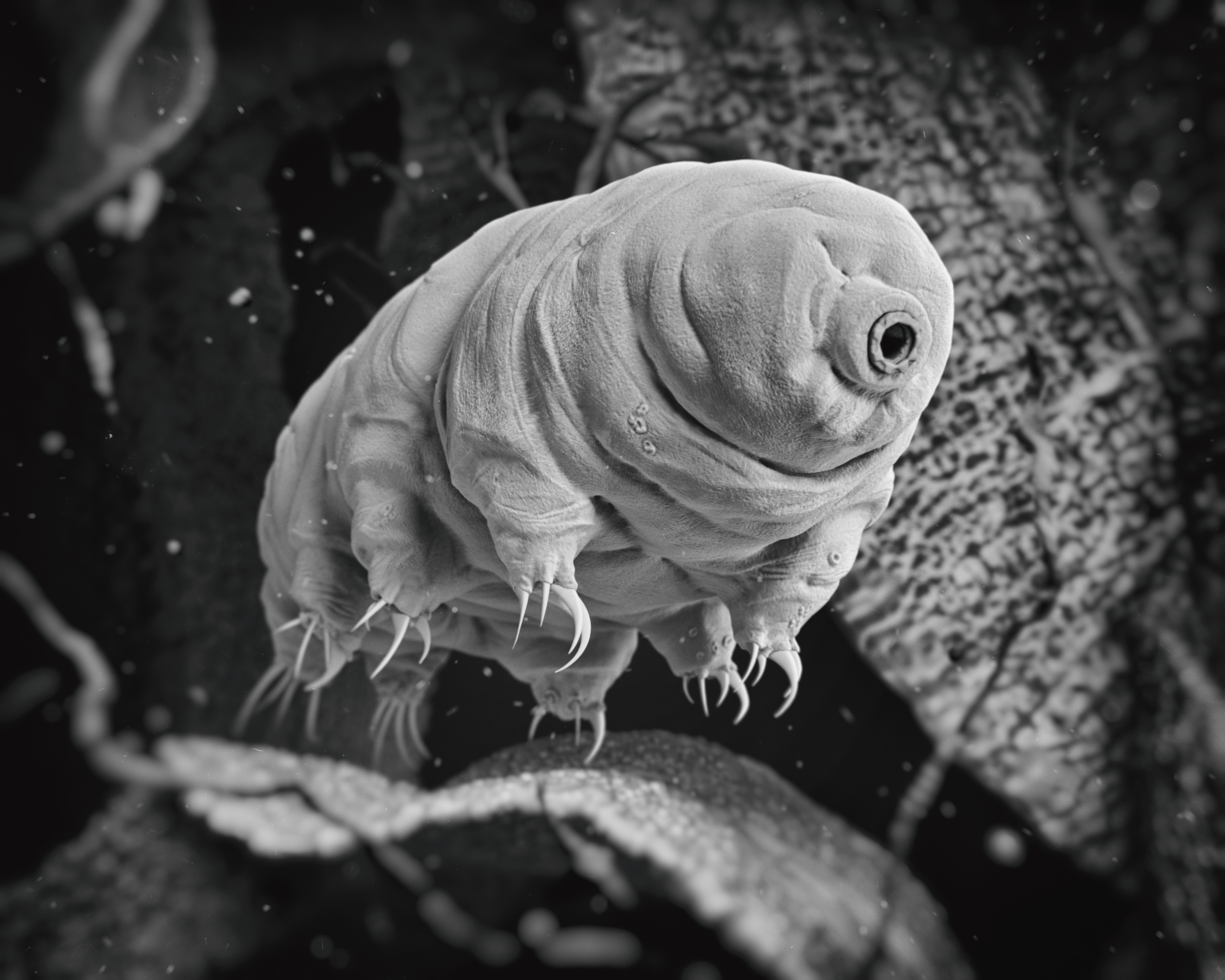Tardigrades can survive being shot out of a high-speed gun
New research has found that these hardy critters can make it out alive — up to a point.

Tardigrades, those adorable, chubby water bears, are notoriously hardy — they may even survive an apocalypse that wipes out humanity.
But can these hardy water bears survive being shot from a gun? New research has found that yes, these hardy critters can make it out alive, but they also have a breaking point.
The new study was inspired by uncertainty about the fate of tardigrades that were aboard Israel's Beresheet probe when it crash-landed on the moon in 2019, according to Science magazine. Had the tardigrades, also called "water bears," survived and contaminated Earth's lifeless companion?
After all, these teensy creatures, about 0.04 inches (1 millimeter) long or less, are famous for their indestructible nature. These hardy beasts can withstand pressures up to six times that of the deepest part of the ocean, extreme amounts of radiation and even the vacuum of space, Live Science previously reported.
Related: 8 reasons why we love tardigrades
In the new study, a group of researchers at the University of Kent in the United Kingdom decided to test if tardigrades could also survive high-speed impacts. To do this, they fed the tardigrades and then "tucked them into bed" — that is, they froze the creatures into a hibernation mode called the "tun state," in which their metabolism decreased to 0.1% their normal rate, Science magazine reported. Then, the researchers fired the critters, at different speeds, out of a "two-stage light gas gun," which shoots objects at higher speeds than a typical gun.
They found that the tardigrades could survive impacts of nearly 3,000 feet per second (900 meters per second), which would result in about 1.14 gigapascals of pressure upon impact. However, the tardigrades perished at higher pressures and impact speeds.
Sign up for the Live Science daily newsletter now
Get the world’s most fascinating discoveries delivered straight to your inbox.
That means that the tardigrades aboard the Beresheet probe, which would have experienced a shock pressure above that level when it crashed, would not have survived, the scientists told Science magazine.
Even the tardigrades that did survive low- and moderate-speed impacts took longer than control samples (which were just frozen and revived from the tun state) to recover, "which suggests that a degree of internal damage has to be overcome," the authors wrote. It's not clear whether the surviving tardigrades could later reproduce, and the authors also noted that testing whether tardigrade eggs could survive being shot out of guns to later develop would also be "a fruitful area of study."
The study has implications for a theory known as panspermia, which holds that life could have traveled between worlds on meteorites after being ejected from asteroids that crashed into planets or moons. This study shows that panspermia is difficult but not impossible, the authors told Science.
About 40% of the rocks and debris that bounce off of asteroid impacts on our planet would hit the moon at speeds low enough for tardigrades to survive, the researchers said. A similar proportion might survive a journey from Mars to its moon Phobos. Of course, these findings apply only to tardigrades; other life-forms, such as microbes, may survive at higher impact speeds, according to Science.
The research could also have implications for detecting life on other planets, the authors said. Spacecraft that pass near the icy plumes of water worlds such as Jupiter's moon Europa and Saturn's moon Enceladus may be able to collect potential life-forms — with the same hardiness as tardigrades — from ejected plumes, without killing them.
The findings were published May 11 in the journal Astrobiology. Read more about these robust tardigrades in Science.
Originally published on Live Science.

Yasemin is a staff writer at Live Science, covering health, neuroscience and biology. Her work has appeared in Scientific American, Science and the San Jose Mercury News. She has a bachelor's degree in biomedical engineering from the University of Connecticut and a graduate certificate in science communication from the University of California, Santa Cruz.









